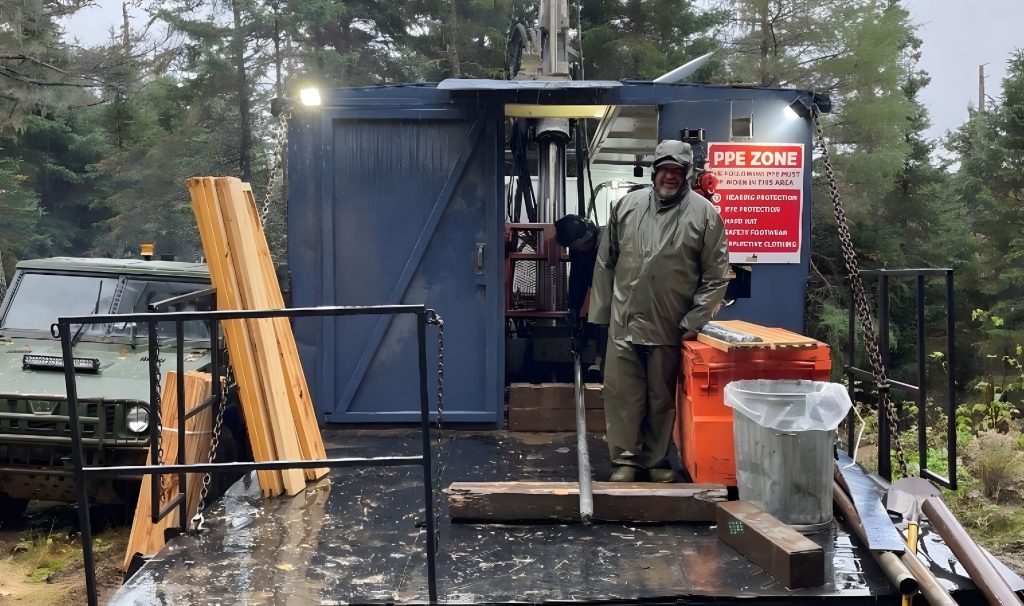Benton Resources drills 5.97% copper over 14.70 metres at Great Burnt Main Project and discovers new copper-gold zones, Newfoundland

Benton Resources Inc. [TSXV: BEX] reported that it has expanded the Great Burnt Main Zone (GBMZ) at the Great Burnt Copper-Gold Project, central Newfoundland down plunge to 950 metres in strike length. Drill hole GB-25-53, a 100-metre step-out from GB-23-45, intersected a wide zone of copper mineralization grading 0.77% copper over 32.10 metres, including 1.12% copper over 18.97 metres, 1.83% copper over 8.63 metres, 2.41% copper over 5.25 metres and 4.34% copper over 1.00 metre within the broader 32.10-metre interval.
A subsequent down-hole pulse electromagnetic survey has confirmed the presence of a conductor in-line with the new intercept showing further expansion potential to depth and down-plunge along strike. Drilling is planned for the next phase to target this anomaly.
In addition, the company is pleased to confirm and build on the high-grade copper mineralization within the Great Burnt Main Zone (GBMZ). The company recently completed drill hole GB-25-60, its second drill hole from west to east, testing an area of the GBMZ believed to be lower-grade based on historical drilling which had reported 1.09% copper over 8.84 metres. GB-25-60 intersected an impressive 4.14% copper over 21.70 metres, including 5.97% copper over 14.70 metres, 17.85% copper over 3.00 metres, and 20.78% copper over 2.00 metres within the broader 21.70 metres interval. The hole continued into the footwall area and cut anomalous copper and gold mineralization over narrow widths. More drilling is required to determine the geometry of the footwall zone. Core angle measurements indicate that the true thickness of the zone is estimated to be 80-90% of core length. The company anticipates that additional drilling will be required to test/upgrade these historical areas of weaker mineralization.
Additionally, the company reports that infill hole GB-25-54, which targeted a large gap in Benton’s 2023-24 drilling in the GBMZ, successfully intersected 2.01% copper over 12.38 metres, reinforcing confidence in the continuity in this zone. GB-25-54 also intersected a second mineralized zone 8.00 metres downhole from the above zone, which returned 0.79% copper over 5.80 metres, including 3.72% copper over 1.00 metres and consists of sulphide stringers and veins.
In addition, the company would like to report that it has made a significant new discovery of heavy stringer to semi-massive mineralization under the North Stringer Zone (NSZ). Hole GB-25-59 encountered two zones, with the upper zone returning 0.69% copper over 14.40 metres, including 1.09% Cu over 3.00 m. The lower zone returned 0.80% copper over 15.00 metres, including 0.96% copper over 6.20 metres, 1.65% copper over 3.00 metres and 2.07% copper over 2.00 metres, within the broader 15.00-metre interval. The upper zone was associated with gold mineralization grading 0.67 g/t gold over 14.40 metres, including 2.16 g/t gold over 3.00 metres. The lower zone, with higher grade copper, is associated with a down hole/off-hole EM anomaly, which demonstrates considerable expansion potential for this new area. Drilling is planned for the next phase to target these anomalies.
President and CEO Stephen Stares stated: “I share our shareholders’ frustrations as we guide our way through these challenging resource markets. With a busy summer season ahead exploring our large and extremely underexplored land package of 25 km in strike length, I am confident that this project will continue to deliver further expansion of our known zones and new discoveries.”
Benton has a 70% interest in the Great Burnt Copper-Gold Project and Homeland Nickel holds the remaining 30%, where they are funding their respective interest, with Benton as the project operator.
Benton is focused on advancing its high-grade Copper-Gold Great Burnt Project in central Newfoundland, which has a Mineral Resource estimate of 667,000 tonnes of 3.21% copper Indicated and 482,000 of 2.35% copper Inferred. The Project has an excellent geological setting covering 25 km of strike and boasts six known Cu-Au-Ag zones over 15 km that are all open for expansion. Further potential for discovery is excellent given the extensive number of untested geophysical targets and Cu-Au soil anomalies.
